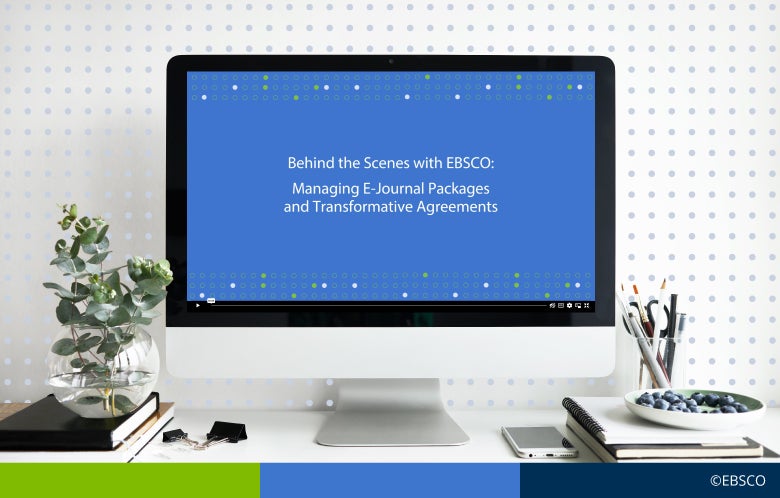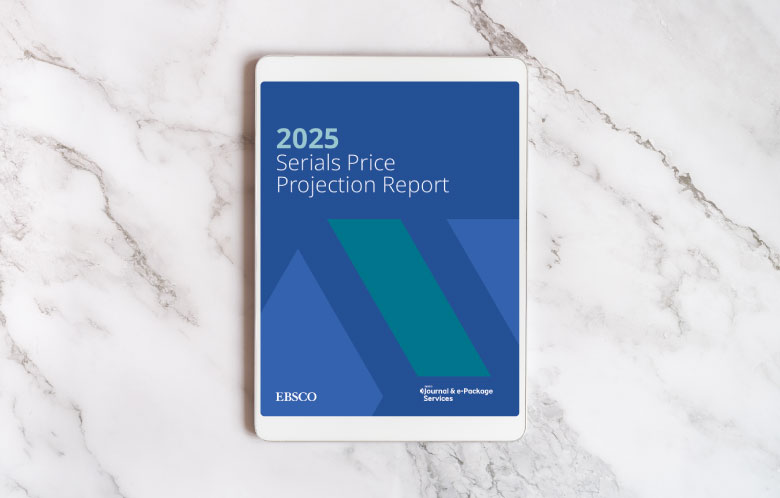The landscape of scholarly publishing is rapidly evolving, presenting new challenges and opportunities for academic research libraries. Transformative agreements (TAs) and Read and Publish deals (RAPs) have emerged as a crucial mechanism in the transition to Open Access (OA) publishing. These agreements aim to shift the costs of publishing from subscription-based models to fully OA, with the goal that research and information is freely accessible to all.
As OA has become more common, transformative agreements have become a key tool for many academic institutions navigating this transition. These agreements allow libraries to direct some budget to support open access publishing, without abandoning the traditional subscription model entirely.
By understanding the various types of transformative agreements, institutions can better evaluate how these contracts might impact their financial and operational strategies. Here, we discuss the most common types of transformative agreements, shedding light on their unique attributes and implications for your institutions.
What are transformative agreements?
The current subscription model for scholarly journal publishing has long been a cornerstone of academic libraries, offering students and faculty access to a variety of research materials. This model has successfully facilitated the dissemination of knowledge, ensuring that institutions can support the scholarly needs of their faculty and students.
By now, most libraries are familiar with transformative agreements, having already explored or adopted them as part of their Open Access strategies. These agreements offer a promising approach to managing and funding scholarly communications.
Transformative agreements repurpose a portion of subscription expenditures to support open access (OA) publishing by the institutions' authors. This gradual shift aims to move from a toll access model, based on subscription fees, to one where publishers are compensated through Article Processing Charges (APCs). By integrating both reading access and OA publishing under a single agreement, transformative agreements present a significant departure from traditional subscription licenses.
These agreements aim to enhance the strategic management of institutional investments in scholarly journal publishing. Depending on the terms, TAs can be cost-neutral with what institutions are currently paying or significantly exceed historical costs.
Consequently, institutions leverage their established financial commitments to negotiate agreements that facilitate OA publishing for a portion of their researchers' articles, while continuing to provide access to valuable content behind paywalls.
How do transformative agreements work?
Each transformative agreement is unique and tailored to specific contexts. Factors such as the current level of subscription spending and the volume of publications an institution or consortium has with a publisher all play a role in shaping these agreements. Additionally, publishers' capacities to adjust their internal processes and workflows influence the terms of each agreement.
During this transitional period, some fees paid to publishers are designated as “reading” fees to maintain access to content still behind paywalls. However, a portion of the contract fees are now attributed to open access publishing services. Recent iterations of transformative agreements have moved towards fully converting fees to support open access publishing, with payments often proportional to the number of articles published. This progression demonstrates a clear shift towards systemic change in scholarly publishing.
Transformative agreements represent a strategic evolution in academic publishing, balancing the benefits of the traditional subscription model with the growing demand for open access. By leveraging existing financial commitments, libraries can enhance their support for open access while continuing to provide valuable access to scholarly content.
What are Article Processing Charges?
Article Processing Charges (APCs) are a key component of the open access publishing model. Under the traditional subscription model, libraries pay for read access to journal packages. However, under the OA model, APCs are fees paid by institutions or authors (or other interested parties) to the publisher to cover the costs associated with publishing in an open access journal.
These charges help publishers manage expenses associated with the editorial processes, peer review, and article production. Read and Publish agreements have also emerged as a strategic approach to balance the benefits of both subscription and open access models. These agreements allow institutions to shift some subscription expenditures to cover APCs, thereby integrating open access publishing into their financial frameworks without imposing additional costs on authors.
While the traditional subscription model remains a component of academic libraries, APCs and transformative agreements offer complementary pathways to enhance the accessibility and impact of research. By strategically integrating these models, libraries can continue to provide comprehensive access to scholarly content while supporting the broader goals of open access.
The Fundamentals of Read and Publish
Read and Publish agreements combine subscription access with open access publishing fees. Institutions pay a single fee that covers both the cost of accessing subscription content and the article processing charges (APCs) for their authors' OA publications.
Benefits of Read and Publish Agreements
- Simplifies budgeting by consolidating costs.
- Encourages OA by removing additional APC burdens on researchers.
- Supports a gradual transition to OA, balancing immediate access needs with long-term OA goals.
Considerations of Read and Publish Agreements
- Requires careful negotiation to ensure fair value for money.
- Success depends on the publisher's commitment to a transition towards OA.
Common Open Access Models
RAPs come in a variety of forms, with some sources identifying up to 12 different types. These contracts vary depending on the publisher and specific institutional needs such as cost, duration of access, copyright models, and provisions for text and data mining. While not exhaustive, this overview highlights some of the most common RAPs in the market.
Publishers Charge Fee Per Published Asset
Characteristics of this agreement type:
- Transactional OA Models: Well-known for charging a fee per published item, following the approach of early OA pioneers.
- Cost Allocation: Shifts publishing costs directly to the research producers.
- Scalability: Proven to work effectively at large scales.
- Global and Disciplinary Equity: Questions about whether these models can be made equitable across different regions and academic disciplines.
- Editorial Standards: Concerns that pay-to-publish models may impact editorial standards.
Synergistic
Characteristics of this agreement type:
- Variety and Innovation: Represents the most varied category with ongoing innovation and experimentation.
- Institutional Cooperation: Relies on cooperation between institutions, exemplified by models like Subscribe to Open (S2O) and an increasing number of publishers are experimenting with this model.
- Smaller Portfolios: Proven effective for smaller portfolios and high-profile individual titles.
- Budget Concerns: Questions about the sustainability of models that rely on subscriptions to free content, given increasing library budget pressures.
- Subscription Requirement: A certain volume of subscriptions must be renewed for the content to be published as open access; if the renewal threshold is not met, the content remains behind a paywall.
- Discounted Pricing: Often based on a discounted subscription price, contingent on a fixed proportion of existing customers renewing.
- Renewal Threshold: If the renewal threshold is met, content for that subscription year is available under OA licenses; if not, content remains closed.
Hybrid Reading and Publishing Spend
Characteristics of this agreement type:
- Bundle Expansion: Originally designed to combine reading and publishing expenditures, these models now include pure publish arrangements.
- Scale and Leverage: Operate at scale and utilize established publisher sales routes to repurpose spending on subscriptions and open access (OA).
- Negotiation and Effort: Require significant effort to negotiate and implement due to their complexity.
- Global Equity Pricing: Ongoing concerns about consistent pricing across different global regions.
- Dual Payments: Libraries or consortia pay for subscription access (read fee) and a separate OA fee, often a standardized processing charge.
- Institutional Permission: Authors may need institutional approval to publish OA under the terms of the deal.
Diamond or Alternative Funding
Characteristics of this agreement type:
- Alternative Funding Sources: These agreements rely on funding from sources other than libraries, such as institutions or societies.
- Varied Implementation: Differences in these models depend on the funding provider and the duration of guaranteed funding.
- Control and Independence: Raise questions about editorial control, independence, and long-term sustainability.
- Mission-Driven Support: Common in mission-driven organizations, allowing publishers to offer fee-free OA to authors affiliated with the institution or society.
- Cost Coverage Assurance: Ensures operating costs are covered, providing financial stability.
- External Authors: Authors outside the institution or non-members may be charged a transactional fee.
- Funding Constraints: In some cases, funding limitations restrict the number of articles or books that can be published annually.
Strengths & Limitations of RAP Agreements
Read and Publish Strengths
Read and Publish contracts offer a novel approach to scholarly communication by shifting the financial model from subscription-based access to open access publishing. The primary strength of this model is the potential for increased immediate open access, leading to broader dissemination and visibility of research outputs. This change promises to end exclusive content rights through the adoption of creative commons licenses, thereby providing researchers and society with better access to previously closed research.
Another significant strength is the enhanced financial oversight for institutions, enabling increased cost control and accountable use of public funds. RAP agreements could maintain the current financial outlay while increasing the share of open access articles. Additionally, these agreements may foster a more sustainable, transparent, and equitable scholarly communication ecosystem by introducing cost transparency and market competition, which has historically been unavailable.
These contracts may also be seen as necessary for systemic change in scholarly communication, offering institutions a framework to transition away from a fully subscription system. While leading publishers maintain revenue throughout this transition, their transparent approach to fees has the potential to foster innovation and inspire new business models.
Moreover, there is an anticipated reduction in administrative burden for researchers, as institutions can cover publishing costs and facilitate broad access to articles. This reduction in cost pressure may make open access more appealing to researchers, allowing them to publish freely in their journal of choice without incurring additional costs.
Increased Open Access:
- More immediate access to research content.
- Broader dissemination and visibility of research outputs.
- End of exclusive rights through creative commons licenses.
Financial Oversight:
- Improved financial overview for institutions.
- Enhanced cost control and accountable use of public funding.
- Maintaining current financial outlay while increasing open access articles.
Transparency and Market Competition:
- Introduction of cost transparency by removing non-disclosure clauses.
- Promotes a fair and equal scholarly communication ecosystem.
- Encourages market competition and innovation in new services and business models.
Systemic Change:
- Provides a framework for transitioning away from the subscription paywall system.
- Drives systemic change in business models toward open access.
- Encourages development and implementation of new business models.
Reduced Administrative Burden:
- Institutions may cover publishing costs.
- Easier for researchers to publish in their journal of choice without extra costs.
- Freedom to choose journals and access a wide range of publications.
Read and Publish Limitations
Despite the potential benefits of RAP contracts, they also present limitations within the scholarly publishing landscape. While well-established publishers are equipped to handle the complexities of Read and Publish agreements, there is a potential risk of reduced market competition. This could limit the broader transformative potential of these agreements by focusing primarily on the shift to open access rather than encouraging new business models and greater competition within the publishing landscape.
Another drawback is the potential for increased costs, which could lock out new entrants and strain library budgets. The lack of cost transparency and the potential rise in publishing expenses may prevent libraries from reallocating funds from subscription budgets to support full open access publishers. This situation could disadvantage research-intensive universities that produce high volumes of research, making the fees unsustainable. Furthermore, researchers might prefer publishing in open access journals of large publishers covered by RAP contracts, sidelining smaller publishers and reducing their viability.
Reduced Competition & Smaller Publisher Impact:
- Large publishers are better equipped to manage RAP contracts, which may reduce market competition.
- Researchers may prefer open access journals from large publishers.
Potential Cost Increase:
- Rise in publishing costs and lack of cost transparency.
- Libraries may struggle to reallocate funds from subscription budgets to support full OA publishers.
- Fees may be unaffordable for research-intensive universities.
Transformative agreements represent a significant shift in scholarly publishing, aligning with the broader move towards open access. Each type of agreement offers distinct advantages and challenges, and the right choice will depend on your institution's specific needs and priorities.
Navigating this landscape requires a strategic approach, informed by a deep understanding of both the financial implications and the broader impact on scholarly communication. By embracing these transformative agreements, academic libraries can lead the way in fostering an open and equitable research environment.



